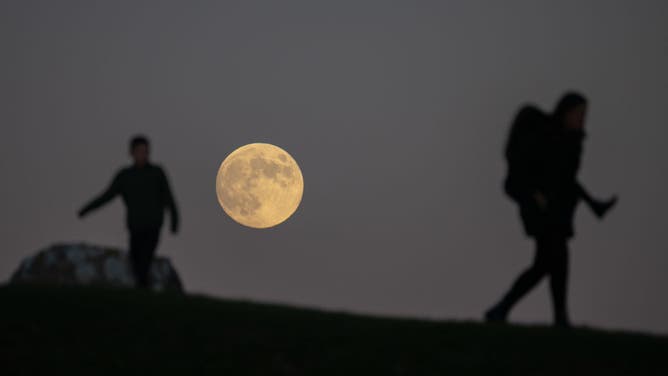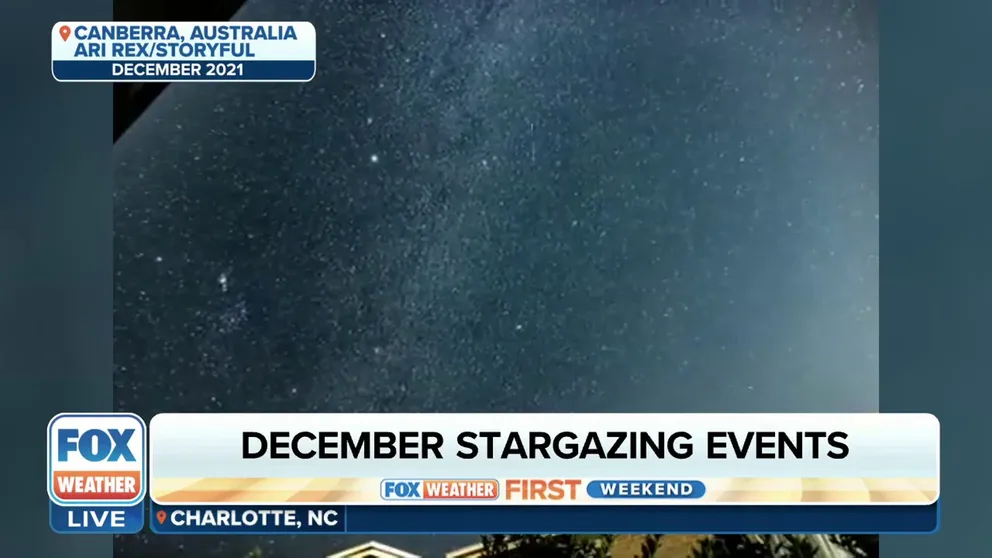December stargazing guide: Geminid meteors, Christmas full Moon and star-Moon pairings
The final full Moon of the year will light the sky around Christmas and the Geminid meteor shower peaks in mid-December.
December stargazing events to look up for
The final full Moon of the year happens near Christmas and the Geminid Meteor Shower peak closes out 2023.
It's hard to believe December is already here and 2023 is coming to a close, but not before a few more opportunities to enjoy the night sky.
There is a lot to look forward to in 2024, including the next Great American Eclipse just a few months away. However, the final month of the year offers plenty to delight stargazers.
Here's a look at December's astronomical events to enjoy before ringing in the new year.
Dec. 1-4: Stars Pollux and Regulus
To start December, Pollux, the brightest of the twin stars in the Gemini constellation, will appear near the Moon.
WATCH OUT FOR THESE ASTRONOMICAL EVENTS IN 2023
According to NASA, as the Moon rises on the south-southeast horizon on Dec. 1, the bright star Pollux will be about 2 degrees to the right and then appear to shift clockwise around the Moon.
From Dec. 3-4, another bright star, Regulus, makes an appearance to the right of the Moon for a beautiful pairing.
Dec. 13-14: Geminid meteor shower peak

A meteor streaks across the night sky in Bazhou, Xinjiang Province, China, in the early morning of December 14, 2021.
(Xue Bing / Costfoto / Future Publishing / Getty Images)
One of the best meteor showers comes at the end of the year.
The Geminid meteor shower happens annually when Earth passes through the particles and pieces of asteroid 3200 Phaethon.
According to NASA, the Geminids are one of the few meteor showers associated with an asteroid and not a comet. However, 3200 Phaethon is an odd object astronomers are still trying to define. NASA said it is possibly a "dead comet" or a new kind of object called a "rock comet." For now, it's classified as an asteroid.
The name of the meteor shower comes from the Gemini constellation because the meteors appear to radiate from the constellation, but they do not originate from it.
The Geminid meteor shower happens this year from Dec. 4-17. During the peak on Dec. 13 and 14, the skies could light up with 150 meteors per hour under ideal conditions.
A clear sky without haze and light pollution will result in optimal viewing conditions for stargazers.
Dec. 21: Winter solstice
On Dec. 21, Earth's North Pole will reach the greatest tilt away from the sun, known as winter solstice. This marks the start of astronomical winter. Meanwhile, meteorological winter has been underway since Dec. 1.
Dec. 21 is considered the shortest day of the year, with exactly 9 hours, 26 minutes and 13 seconds of daylight, according to NASA.
WHEN DOES WINTER REALLY START? IT DEPENDS ON WHO YOU ASK
From that day forward, the daylight hours will increase across the Northern Hemisphere until the summer solstice in June.
Dec. 25-26: A Christmas full Moon

Children play to the backdrop of the full moon, known as the Cold Moon as it rises, on December 07, 2022 in Portland, England.
(Finnbarr Webster/Getty Images / Getty Images)
Known as the Cold Moon, according to the Old Farmer’s Almanac, the final full Moon of the year happens Dec. 26. The Moon will be at its fullest and brightest at 7:33 p.m. EST.
However, the Moon will appear full from Monday evening to Thursday morning, meaning on Christmas Eve a bright, nearly-full Moon will be there to guide Santa through the night.
Cold Moon is a Mohawk name because of the cold and snow during this time of year. Different Native American tribe names refer to the December full Moon as Snow Moon, Frost Moon, Winter Maker Moon and Long Night Moon, according to the Old Farmer’s Almanac.
